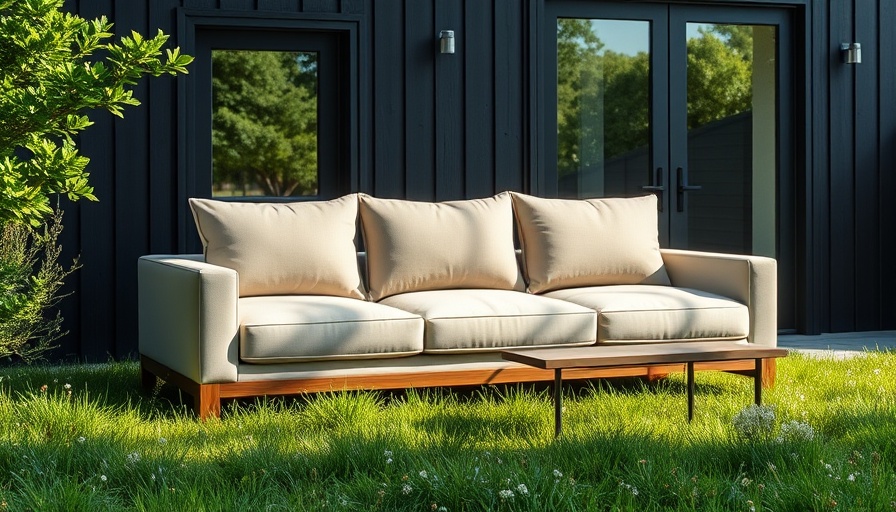
Welcome Spring with à la Mode Outdoor Lounge Furniture
As the warmer months approach, homeowners everywhere are gearing up for outdoor gatherings and lazy afternoons in the sun. The newly launched Settle line from Muuto is creating a buzz in the design community, offering stunning furniture options that blend style, comfort, and practicality. The collection, designed by the Norwegian duo Anderssen & Voll, includes a lounge chair, loveseat, and a three-seater sofa, making it a perfect fit for any outdoor setting.
Style Meets Substance in the Settle Line
What truly sets the Settle line apart is its thoughtful design. Each piece features a powder-coated steel frame complemented by luxurious Sapele wood armrests, wide enough for holding your favorite beverage. The quick-dry foam cushions ensure comfort, even after an unexpected rain shower, while the polypropylene and rubber webbing used in the back and seat allows for air circulation to keep you cool on hot days. This attention to detail illustrates Muuto's commitment to crafting functional yet sophisticated outdoor living solutions.
Customization to Suit Your Style
Another appealing aspect of the Settle collection is the customization options available. Homeowners can select from various frame colors, including gray, taupe, and dark green, along with a multitude of cushion colors ranging from natural to root and thistle. This versatility allows you to either coordinate or contrast with your existing outdoor decor, ensuring that your new furniture feels like a seamless addition to your space.
Practicality for the Modern Homeowner
Pricing for the Settle line starts at $2,495 for the outdoor lounge chair, $3,195 for the two-seater sofa, and $4,195 for the three-seater option. While these prices may seem steep, investing in quality furniture can elevate your outdoor experience. Durable and trendy pieces like those from Muuto not only enhance your home’s aesthetic appeal but can also withstand seasonal wear and tear.
Why Investing in Quality Outdoor Furniture Matters
The right outdoor furniture transforms your space into an oasis where family and friends gather. Quality pieces like those offered in the Settle collection provide comfort and long-term value that inferior products often lack. Consider the environmental impact too—higher-quality materials often mean more sustainable choices, aligning with a growing consumer preference for more responsible living.
Where Function Meets Environment
In recent years, the demand for environmentally sustainable furniture has surged. Brands like Muuto are not only responding to aesthetic preferences but are also attuned to ecological concerns. Their use of durable and eco-friendly materials in the furniture underscores a broader trend towards sustainability in home design, encouraging homeowners to invest in pieces that are not just beautiful, but also kinder to the planet.
Your Patio Transformation Awaits
With the new Muuto Settle line, homeowners can elevate their outdoor living experience to match their indoor sophistication. This is not just furniture; it’s an investment in comfortable gatherings, tranquil moments, and the expression of personal style. So, as you prepare for the sun-soaked days ahead, consider reinventing your outdoor space.
To kick off your outdoor transformation, explore the options available with Muuto’s Settle collection today. Whether it’s a cozy nook for personal reflection or a lively space for friends, good design can make all the difference.
 Add Row
Add Row  Add
Add 




Write A Comment